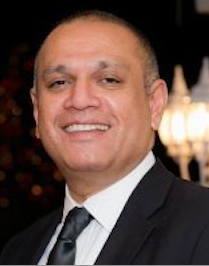Healthcare things are getting better at supporting wellness

Kuruvilla Mathew, NESS
One of the many sizable challenges in healthcare today is ensuring patients are taking care of themselves: taking their medication on time, getting enough sleep, doing what the doctor has advised, and maintaining a healthy lifestyle, writes Mathew Kuruvilla, the chief innovation officer of Ness Software Engineering Services.
It is not unusual, for example, for patients to go off their medication because they ran out, or worse yet, they decided not to take it anymore because they felt better. And, until more recently, there hasn’t been a simple mechanism in place to alert patients or inform doctors if a patient is showing an elevated heart rate, higher or a lower blood pressure, low blood oxygen levels, and other biometric information that could signal a patient is off track with the prescribed medical course.
Now, healthcare monitoring has progressed significantly with several technology advancements in wireless sensor actor networks (WSAN) that work alongside wearable and implanted devices. The quality and variety of biometric data that can be collected from these devices is constantly improving, which offers healthcare providers much greater insight than ever before—remotely and in real-time— into a patient’s fitness level, vitals and overall health.
Today, remote patient monitoring uses some highly specialised devices that are being commoditised to collect biometric information and store several days’ worth of patient information for practitioner review. The number of devices entering this growing market is fueled by consumer interest and equally influenced by practitioners. With the runaway success of wellness devices, such as Jawbone UP, FitBit, Basis Peak and a host of others that fit every variant of consumer lifestyle and budget, consumers are warming up to other devices to help them understand health warning signs. The IoT ecosystem around wellness is continually expanding.
Some believe the ‘connected patient’ is a positive step in IoT and healthcare as the patient is more aware of their condition and progress through real-time information. This is an important step in patient awareness.
Research shows that patients who are recipients of more personalised care are more likely to have better health outcomes and fewer hospital trips, which often translates into reduced healthcare costs. The same could be said for the NHS in the UK, for example, which could help reduce government spending.
The sensor technologies needed for healthcare have also gone through a major evolution. The costs of many sensors have come down markedly, and the quality of sensing and data fidelity has improved significantly. With advancements in Micro Electro Mechanical Systems (MEMS), sensor arrays and meshes can be created that use a decentralised control unit, like an integrator/gateway, to merge the individual data collected from multiple sensors and generate a reliable, holistic view of patient data and help communicate with a doctor/hospital in a secure manner. This ensures any inaccurate data from a singular device can be isolated, preventing misinterpretation. Not only is this data set invaluable to patients’ in-home healthcare, but big data solutions can also be applied to the larger data ecosystem to determine patterns that facilitate disease diagnostics.
Beyond more pervasive use of remote monitoring devices and improved sensor data quality, the Healthcare (Internet of) Things must also be context aware to be increasingly effective. Now, composite sensor arrays are being created to deliver an enhanced experience, using health sensors, such as pill counters, blood oximeters, blood pressure monitors, pulse monitors, and environmental sensors, such as air quality monitors, thermostats, sensors for ambient light and sound, humidity, pressure, to provide a full-spectrum view of the patient’s condition and the environment that surrounds them.
Processing this large volume of data in a meaningful way to provide actionable insights can be complicated. Intelligent filtering and automatic calibration can be done with the help of an integrator/gateway, and is, in essence, at the heart of Internet of Things anyway. The communication between these devices ranges across Bluetooth 4.0, Bluetooth Smart, ZigBee, and WiFi, but the key is transmitting this data to a secured cloud store that the patient’s doctor or hospital can access and monitor for changes in health. There are number of initiatives underway to automatically upload all relevant information into a patient’s Electronic Health Record (EHR). Some institutions have already implemented this, and others are in the process of integrating this data into the patient’s EHR.
Big data solutions will play a huge part in using healthcare ‘things’ for wellness and disease management. The volume of data that needs to be captured is tremendous as monitoring happens 24/7, 365 days a year, and traditional data management tools cannot process this data in a timely manner. Further investment in big data stores and analytics engines is required to ensure meaningful data is captured and filtered to make it easy for doctors to review and suggest suitable treatments.
The Healthcare (Internet of) Things has already made significant progress, bolstered by the acceptance of wearable devices among consumers and better and more accessible sensor technologies. People’s lives are being positively impacted. As healthcare costs continue to rise across the globe and governments explore ways to be more cost effective without compromising patient care, using healthcare IoT technology to provide personalised and effective remote healthcare, while contributing to broader wellness understanding, is essential.
